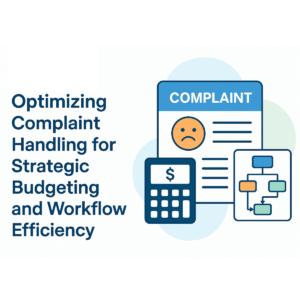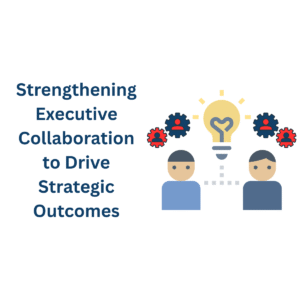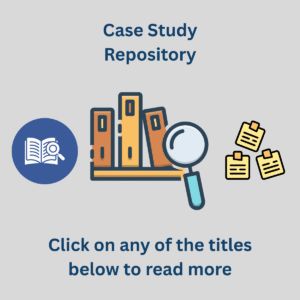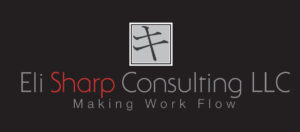CASE STUDIES
How Eli Sharp Consulting has helped clients and how WE can help YOU!

Case Study: Optimizing Complaint Handling for Strategic Budgeting and Workflow Efficiency
Challenge: Lack of Visibility into Workload and Budgeting for a Critical QA Function
A major life sciences organization needed to better understand the resource demands and performance of its Complaint Handling Process at a key U.S. service center. Leadership was preparing departmental budgets and recognized that the absence of data-driven insight into work content was creating gaps in forecasting, staffing, and operational efficiency. Without a detailed view of how time was spent across different complaint types and personnel, the team risked under- or overestimating its true capacity needs.
Solution: On-Site Work Content Study and Process Analysis
To support accurate budgeting and drive improvement, the organization engaged Eli Sharp Consulting (ESC) to perform a three-day work content study of the Complaint Handling Process. The goal: provide quantifiable insights into task distribution, uncover opportunities for process improvement, and recommend ways to rebalance workload where needed.
The analysis was structured as follows:
- Pre-Work Preparation: ESC reviewed the current state documentation, including process maps, supporting materials, and available performance metrics. This foundational information informed the study design and areas of focus.
- On-Site Observations: ESC conducted detailed, repeated task observations of each associate involved in the Complaint Handling Process. By capturing 5–10 repetitions per task variation, the consultant established a reliable baseline of time requirements and process complexity.
- Skill Differentiation: Special attention was paid to the differences between associates' primary and secondary tasks—highlighting areas of strength, training needs, and inefficiencies caused by mismatch of skills to assignments.
- Leadership Interviews: ESC met with key team leaders including the QA Manager, Team Lead, and Site Director, to gather qualitative insights on performance expectations, pain points, and desired outcomes.
- Process Review: The consultant also evaluated how various complaint types (e.g., products from Business Unit A vs. Business Unit B) were distributed among staff, identifying gaps in cross-training, workload balance, and potential areas for reassignment.
Results: Actionable Data to Drive Budgeting and Process Improvements
One week after the site visit, ESC delivered a detailed analysis report outlining:
- Accurate task duration benchmarks for core complaint handling activities
- Insight into skill utilization, workload allocation, and role specialization
- Process improvement recommendations to streamline task flow and reduce inefficiencies
- Opportunities to rebalance tasks for more consistent productivity and resource use
- A foundation for budgeting based on actual work content data rather than assumptions
As a result, the QA leadership team was equipped to develop a more precise and justifiable departmental budget, while also initiating process improvements that enhanced both performance and staff engagement.

Case Study: Strengthening Executive Collaboration to Drive Strategic Outcomes
Challenge: A Transitioning Leadership Team Needing Alignment and Trust
A global supply chain executive team within a healthcare company was experiencing shifts in leadership and structure. With a newly appointed leader and recent team member changes, the group needed a renewed foundation of trust, cohesion, and alignment. There was also an urgent need to enhance cross-functional collaboration in order to deliver on the company’s evolving strategic priorities. The team recognized the opportunity to invest in intentional development that would both build relationships and support business execution.
Solution: Executive Team Development Through Diagnostics and Experiential Learning
Eli Sharp Consulting (ESC) designed and delivered a tailored four-day workshop aimed at deepening team alignment, strengthening collaboration, and addressing live business priorities.
The solution unfolded in several phases:
- Discovery & Diagnostics: ESC conducted a series of discovery meetings with executive leadership and designed a one-hour virtual diagnostic session, which utilized two custom tools: the Team Values Assessment and an Interdisciplinary Team Questionnaire. These tools identified cultural norms, collaboration gaps, and strategic misalignments.
- Workshop Design: The diagnostics informed the design of a high-impact, off-site team development workshop, co-developed with the Executive Vice President of the International Supply Chain and the Senior Vice President of Operational Excellence.
- Immersive Four-Day Experience: The executive team gathered at an off-site location in France for a structured, intensive development session focused on:
- Building trust and improving interpersonal dynamics
- Practicing collaboration through real-time problem-solving on 2–3 strategic business issues
- Identifying high-impact cross-functional opportunities
- Designing collaborative processes and developing clear rules of engagement
- Team Building Experience: On the third evening, the team participated in a creative, experiential group activity—a drumming workshop—to reinforce collaboration in a relaxed and engaging format.
Results: A Cohesive, Strategically Aligned Executive Team
Following the workshop, the executive team reported measurable improvements in:
- Trust and communication within the group
- Shared ownership of strategic priorities
- Confidence in cross-functional problem-solving
- Clarity around roles, responsibilities, and decision-making
- Team norms and processes to support ongoing collaboration
The experience served as a pivotal moment for the team, catalyzing stronger alignment, deeper engagement, and a readiness to lead the organization through its next phase of strategic execution.

Case Study: Strategic Alignment for Antimicrobial Susceptibility Testing in a Changing Landscape
Challenge: Unclear Future Strategy for Breakpoints Determination Amid Evolving Antimicrobial Resistance
A leading clinical standards organization recognized the need to reassess its strategy for breakpoints determination in antimicrobial susceptibility testing (AST). With emerging AST methods and increasing regulatory scrutiny, leadership sought to align key stakeholders around a unified future strategy that accounted for anticipated changes in antimicrobial resistance (AMR) and regulatory requirements, particularly in relation to FDA recognition.
Solution: One-Day Strategy Development Meeting to Define Future State and Action Plan
Eli Sharp Consulting (ESC) facilitated a one-day strategic planning session aimed at aligning subject matter experts, assessing current and future state environments, and developing actionable recommendations for breakpoint determination processes.
The project was structured as follows:
Pre-Meeting Preparation: ESC collaborated with the client’s Leadership to define strategic objectives, identify key discussion points, and finalize the attendee list of 15 subject matter experts.
- Pre-work included gathering existing documentation, AMR position papers, and emerging AST methodologies to provide participants with a comprehensive baseline for discussion.
- ESC developed a detailed agenda and structured strategy development tools, incorporating visual aids such as flip charts, brown paper, and Post-It notes to capture group input effectively.
One-Day Strategic Planning Session:
- Morning Session: Current state assessment, identifying internal and external environmental factors influencing AST processes and FDA interactions.
- Midday Session: Future state mapping, including estimated timelines for emerging AST methods and anticipated regulatory changes.
- Afternoon Session: Strategy development, focusing on identifying gaps in current processes, funding implications, and potential FDA engagement strategies.
- Wrap-Up Session: Presentation of findings, group discussion, and consensus building around key action items.
Deliverables and Outcomes:
- Current State Assessment: Comprehensive analysis of current processes and regulatory landscape.
- Future State Vision: A high-level roadmap outlining anticipated changes in AST methodologies and regulatory requirements.
- Funding Needs Assessment: Estimated funding requirements and timelines for proposed process changes.
- FDA Engagement Strategy: A straw man proposal for gaining FDA recognition of breakpoints determination, aligned with future state projections.
Results: Strategic Alignment and Clear Action Plan for Breakpoints Determination
The strategic planning session resulted in:
- Clarity on Current and Future State: Participants gained a unified understanding of current AMR challenges and anticipated regulatory shifts impacting processes.
- Prioritized Action Plan: A clear roadmap was developed, detailing key process changes, funding needs, and targeted FDA engagement strategies.
- Enhanced Cross-Functional Alignment: The session fostered consensus among diverse subject matter experts, aligning leadership on a strategic path forward.
- Framework for Ongoing Strategy Development: The structured format provided a repeatable process for future strategic planning efforts, ensuring ongoing alignment in a rapidly evolving landscape.
By integrating strategic planning with practical implementation strategies, ESC enabled the client to not only clarify its future path but also position itself as a proactive leader in breakpoint determination amid the growing complexities of antimicrobial resistance.

